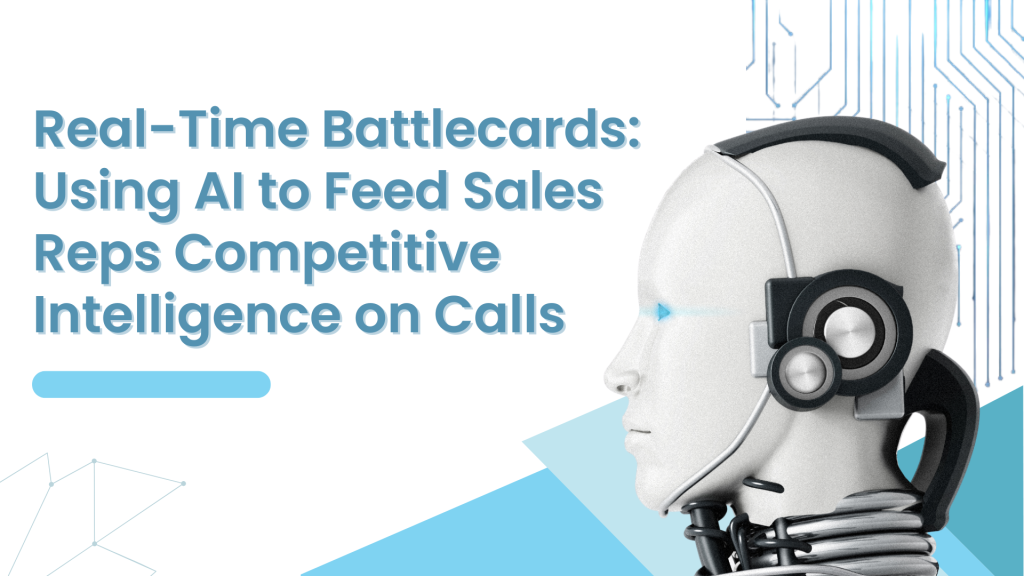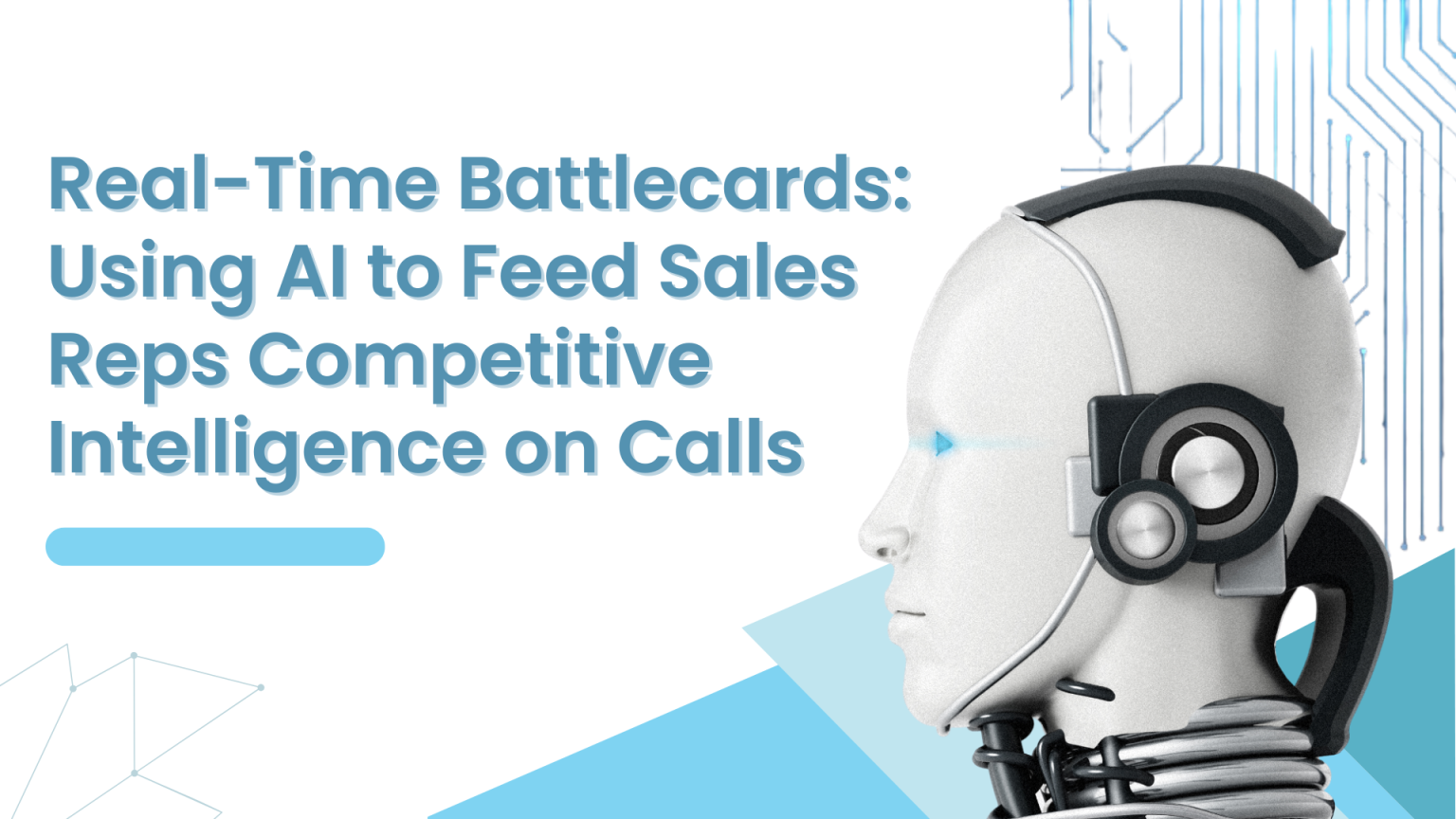
In today’s highly competitive sales environment, having the right information at the right time can make or break a deal. Sales reps are often put on the spot when a prospect mentions a competitor during a live conversation. In those crucial moments, hesitation or an unconvincing response can lead to a lost opportunity. Traditional battlecards—static PDFs or training documents—have long been used to prepare sales reps for these situations, but they fall short in real-time scenarios. This is where AI-powered real-time battlecards are transforming sales conversations by delivering competitive intelligence directly into the flow of the call.
What Are Real-Time Battlecards?
Battlecards are concise resources that provide sales reps with competitor insights such as strengths, weaknesses, differentiators, and strategies to handle objections. Real-time battlecards take this concept further by using artificial intelligence to actively listen to customer conversations, detect competitor mentions, and instantly provide tailored responses. Instead of forcing sales reps to shuffle through notes or rely on memory, AI-driven systems surface the right information at the exact moment it is needed.
How AI Powers Real-Time Battlecards –
Artificial intelligence plays a pivotal role in making battlecards dynamic and context-aware. Natural Language Processing (NLP) allows systems to identify competitor names, objections, and buying signals in conversations. This intelligence is combined with knowledge graphs that are continuously updated with the latest competitor insights, customer feedback, and market developments. AI goes beyond static data by mapping insights to the context of the deal, the buyer persona, and the specific stage of the sales cycle. With continuous learning, the system improves over time, surfacing responses that are proven to be most effective based on previous calls.
Benefits for Sales Reps and Organizations –
The value of real-time battlecards is twofold—empowering individual sales reps while benefiting the organization as a whole. For reps, the biggest advantage is confidence; they no longer feel caught off guard when competitors come up. This translates into smoother conversations and stronger positioning. Organizations, on the other hand, see measurable improvements in win rates, faster ramp-up times for new hires, and the ability to track which battlecard strategies drive the best outcomes. This creates a feedback loop where competitive intelligence becomes sharper and more effective over time.
Real-World Application –
Consider a scenario where a prospect says, “We are also looking at Competitor X because they seem to have stronger analytics.” Within seconds, an AI-powered battlecard system surfaces a response strategy: a direct comparison that highlights your product’s advanced analytics, real-world customer success stories, and suggested probing questions to reframe the conversation. Instead of scrambling for an answer, the rep confidently addresses the objection and redirects the discussion toward value. This level of real-time agility would be nearly impossible with traditional battlecards.
Best Practices for Implementing AI Battlecards –
To maximize effectiveness, organizations must implement AI battlecards thoughtfully. The content should remain short, actionable, and conversational—bullet points and talk tracks are far more useful than lengthy explanations. Competitive intelligence must be updated frequently so the AI system reflects the latest product updates and competitor moves. Integration into existing sales tools such as CRMs or call platforms ensures seamless adoption, while training ensures reps trust and use the insights effectively during live calls.
Conclusion –
Real-time battlecards represent a shift from reactive sales enablement to proactive, dynamic intelligence. Instead of arming reps with static resources, organizations can now provide live, contextual guidance that directly impacts deal outcomes. As AI continues to evolve, these systems will become even more predictive, not only surfacing competitor responses but also offering deal strategy insights and buyer intent signals. For modern sales teams, adopting AI-powered battlecards is no longer just a competitive advantage—it is quickly becoming a necessity.


